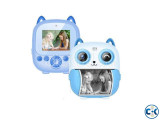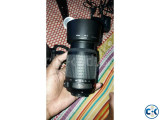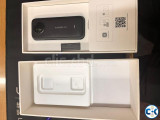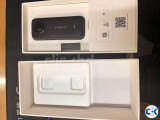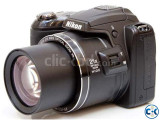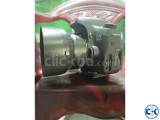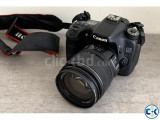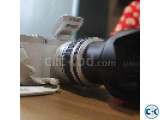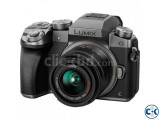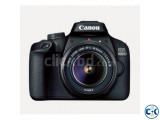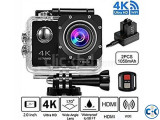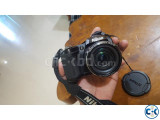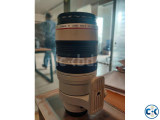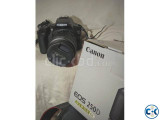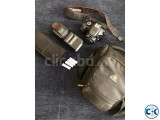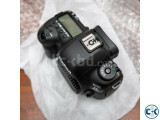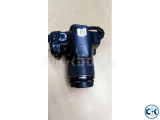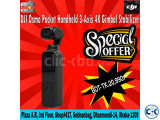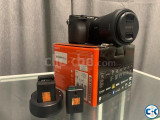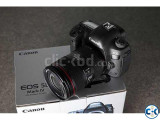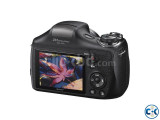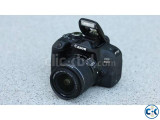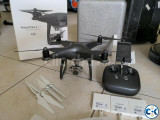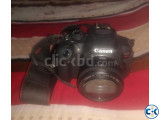My ClickBD
Sony Cyber Shot DSC-H5
Lowest price in Bangladesh:
Highlights
- New/Used: Used
- Brand: Sony
- Type: dSLR
- Pixel: 7.2
- Zoom: 12x
Seller info
Sold by:
Rahul Chowdhury
Member since:
08 Dec 2011
Location:
Dhaka Sutrapur
Safety tips:
Don’t pay in advance
Meet in a safe & public place
Meet in a safe & public place
Description
DESCRIPTION for Sony Cyber Shot DSC-H5 price in Bangladesh
|
The good: 12X zoom; image stabilization; solid selection of accessories. The bottom line: Advanced amateurs who find dSLRs too bulky will like the Sony Cyber Shot DSC-H5's versatility but lament the noise at higher ISOs. Sony's Cyber Shot DSC-H5 sits at the top of the company's current crop of megazoom cameras. Fittingly, it has all the specs you'd expect in a camera of its class, including a large, image-stabilized 12X optical zoom lens, a 3-inch LCD screen, a 7.2-megapixel CCD sensor, and a full set of manual controls. Step-up snapshooters, soccer moms, and even some advanced amateurs will find that the Cyber Shot DSC-H5 has a lot to offer. The huge zoom range is great for occasions when you want versatility but don't want to lug around a DSLR and a ton of lenses. Plus, the wide maximum aperture of f/2.8, along with the image stabilization, helps in low light. Unfortunately, this camera's higher ISOs yields so much noise that picky low-light shooters will want to look elsewhere.A testament to the freedom that digital photography has brought to camera designers, the Sony Cyber Shot DSC-H5 shares the lopsided look of its H-series brethren, the DSC-H2 and DSC-H1. Its big zoom lens dominates the left side, while a prominent, well-contoured grip defines the camera's right-hand side. High up the front of the grip is a control wheel to change manual exposure settings. Just above that sits the shutter-release button, angled slightly forward. Behind the shutter, you'll find buttons for focus and drive mode/exposure bracketing, and behind them is the mode dial. Just to the left of the mode dial are the power button and a button for image stabilization (Super SteadyShot, in Sony parlance). Just behind these buttons, leaning toward the back of the camera, are two more buttons; one switches between the LCD and the electronic viewfinder (EVF), the other lets you enter and exit playback mode. As usual, the zoom rocker is found at the top right of the camera back, and the bottom right hosts the menu controls: in this case, a four-way rocker that surrounds an Enter button. Below the rocker is the trash button, while menu and display buttons are tucked between the zoom and menu controls. While there doesn't seem to be another logical place for the menu control, I accidentally activated it a number of times while shooting. Other than that, the controls are well placed and accessible, and Sony's menu system is easy to navigate. Like the DSC-H2 and the DSC-H1, the Cyber Shot DSC-H5 runs on two AA batteries, inserted in the bottom of the camera in the same small compartment that houses the Memory Stick Duo slot. Conveniently, Sony built a hinged cover for the compartment, so you don't have to worry about the batteries falling out when changing the memory card, though the stubby-fingered among us may struggle a bit to remove the small Memory Stick Duo. This bit of fancy design also means you probably won't have to remove the camera from your tripod if you fill up the card while snapping twilight shots of Times Square. Top among the Sony Cyber Shot DSC-H5's features is its 12X optical zoom, 36mm-to-432mm (35mm equivalent), f/2.8-to-f/3.7 Carl Zeiss Vario-Tessar lens. Some may complain that 36mm isn't wide enough, but the vast majority of users will love the enormous reach at the telephoto end. An SLR lens with these specs would cost at least as much--and probably more--than this entire camera. Plus, this camera includes Sony's Super SteadyShot image stabilization, which increases the effectiveness of the lens's wide maximum apertures in low-light situations. In case 12X isn't enough, Sony makes good use of the DSC-H5's 7.2 megapixels with its Smart Zoom feature, which crops the image as you shoot, to yield 5 megapixels at 14X, 3 megapixels at 18X, 2 megapixels at 22X, or VGA-size images at 57 megapixels. Sure, this isn't very different than the digital zoom built into most cameras, but the simple translation into lower megapixels makes the feature much more useful. Snapshooters will appreciate the camera's simple auto mode and handful of scene modes, while more advanced users will be happy to see the DSC-H5's full manual exposure controls, including aperture priority, shutter priority, program, and full manual. Of course, you also have exposure compensation: up to plus or minus 2EV in 1/3EV steps; exposure bracketing; six white-balance choices, including manual; and ISOs ranging from ISO 80 to ISO 1,000. The DSC-H5's movie mode tops out at 640x480 pixels and 30fps, and it produces good-looking clips, but if you plan on using this highest video setting, you'll need a Memory Stick Pro Duo card. If not, you'll have to settle for 16.6fps or a lower resolution. Thankfully, the prices for Pro Duo media have come down in recent months. Autofocus lagged a bit while panning in video mode, but for a still camera, it did surprisingly well, and its video e-mail setting makes it a snap to create small clips to send to your friends. The camera has 32MB of internal memory, which doesn't go far with 7.2-megapixel JPEGs. You should plan on buying a Memory Stick Duo or a Memory Stick Pro Duo if you plan on shooting a decent number of high-resolution images. Sony includes a pair of 2,100mAh nickel-metal-hydride rechargeable AAs to power the camera, along with a small charger, though standard batteries will do the trick in a pinch. The camera also comes with a lens hood, a cap, and an adapter ring that lets you use accessories, such as conversion lenses, filters, and even a ring light. Persnickety purchasers will note that the DSC-H5 doesn't include a hotshoe, so you'll have to live with the built-in flash. While by no means slow, the Sony Cyber Shot DSC-H5 lagged a little behind the Cyber Shot DSC-H2 in most cases. The DSC-H5 took 2.7 seconds to power up and capture its first shot, and time between shots thereafter was 1.8 seconds. Flash increased the shot-to-shot time to 2 seconds. Burst mode captures up to 5 fine-quality JPEGs at about 1.3fps. Stepping down to VGA resolution raises the number of shots captured to 100, though the speed remains 1.3fps. |


